
Design Studio
Context
In 2019 Chevron restructured their organization. The IT function removed all Business Analysis Functions, embraced more Agile practices and created a Subchapter that was tasked with Digital Transformation.
Design was not supported by C-Suites and unknown to most of the organization. Even considered unnecessary and superfluous. Engineers and Project Managers often didn’t know what they were missing, and how to ensure their projects were used by the people they were created for and created long term value to the business. Select employees and functions saw value of UX Design.
After a few individual successful projects delivered by IBM the Digital Transformation Lead running the Agile Subchapter at Chevron saw an opportunity to bring amore unified approach to delivering Design across the entire organization.
I was brought in to serve as a UX Design Lead along with a counterpart UI Design Lead.
GOAL: Build out a Design Studio inside of the Agile Subchapter to serve all of the functions across Chevron through a unified set of practices.
Problem
Human
-
All operations up until that point were performed through email, fax, phone and excel spreadsheets. Each process and each transaction therefore could take up to several weeks and was highly susceptible to input errors
-
A purchase of a fund for a new investor could not be formally finalized until full KYC process was finished, which would lead to sometimes a full month of delay. To counteract that, the Internal teams engaged in complex workarounds, backdating transactions, calculating the market movement and financial changes, adjusting share amounts or taxation implications by hand until the processes were formally finalized.
-
To top that off, the digital systems present were severely outdated and inflexible, updating only once every 24h, but holding key pieces of information about the financial vehicles and regulations. This resulted in very arduous daily work for the Financial Advisors and Fund Administrators responsible for these large accounts. Despite their commitment to white glove service, their investors had extremely limited visibility into their investments real-time.
-
The project was 2 years old at that point with much work being done in Data Science, but with little consideration to needs of end users.
-
Several other Individual Contributors across the company were building out Internal Operations Platforms (Fund Manager, Client Information System etc.) and design was severely struggling across the account with Designers being pushed to re-do their screens to match what was coded by development.
Team
Organizational
-
Originally the project had a Design Lead and a Design Principal assigned, but within the first month of the project, they both quit IBM, leaving me alone on the assignment.
-
The only support I was offered at that point was an entry level IBMer who had an interest in UX Design, but no formal training.
Strategy
Based on my previous experience with highly successful projects I knew that several factors would influence a successful project.
A strong sprint cadence.
Design working ahead of development.
Getting 80% right to start without loosing momentum.
Reviews with users, business and getting approvals.
Building relationships early and understanding who cares about what.
Grow my team member’s design capability.
Delegating and reviewing work and ensuring accuracy.
Advocate for a more robust team.
Execution
Kick Off
We started the project with several in-person discovery workshops to gain understanding of the processes, investment types, regulatory considerations and needs for Institutional , Ultra High Net Worth and Agent Investors.
During the process, we identified that 3 personas were missing in the original scope: Fund Administrator, System Administrator and Client Partner.
The work was divided into Dashboards, Investment Processes, and Onboarding and Administration. Each Flow was developed for Institutional Investors First, and followed by the other personas. When finished with all of the Desktop views we then developed Tablet and finally mobile views for all flows.
Cadence
In 3 week sprints, we were able to deliver and get approval for our screens. Thanks to our Project Manager, who recorded and sent out the reviews to all people who could not attend and gave them a week to get notes back to us for incorporation into the current sprint. Any notes that were not delivered on time would be incorporated into the following sprint.
As we Delivered screens, we created robust Annotations, and worked closely with the Business Analyst, who was responsible for documenting all of the geographical and legal differences that may occur on the screens. Aside from all interactions, these documents pulled together business rules, excel spreadsheets and other references that could be easily updated if needed. They also mapped the back end data structures to match user front-end expectations.
This approach allowed the engineering team to develop quickly.

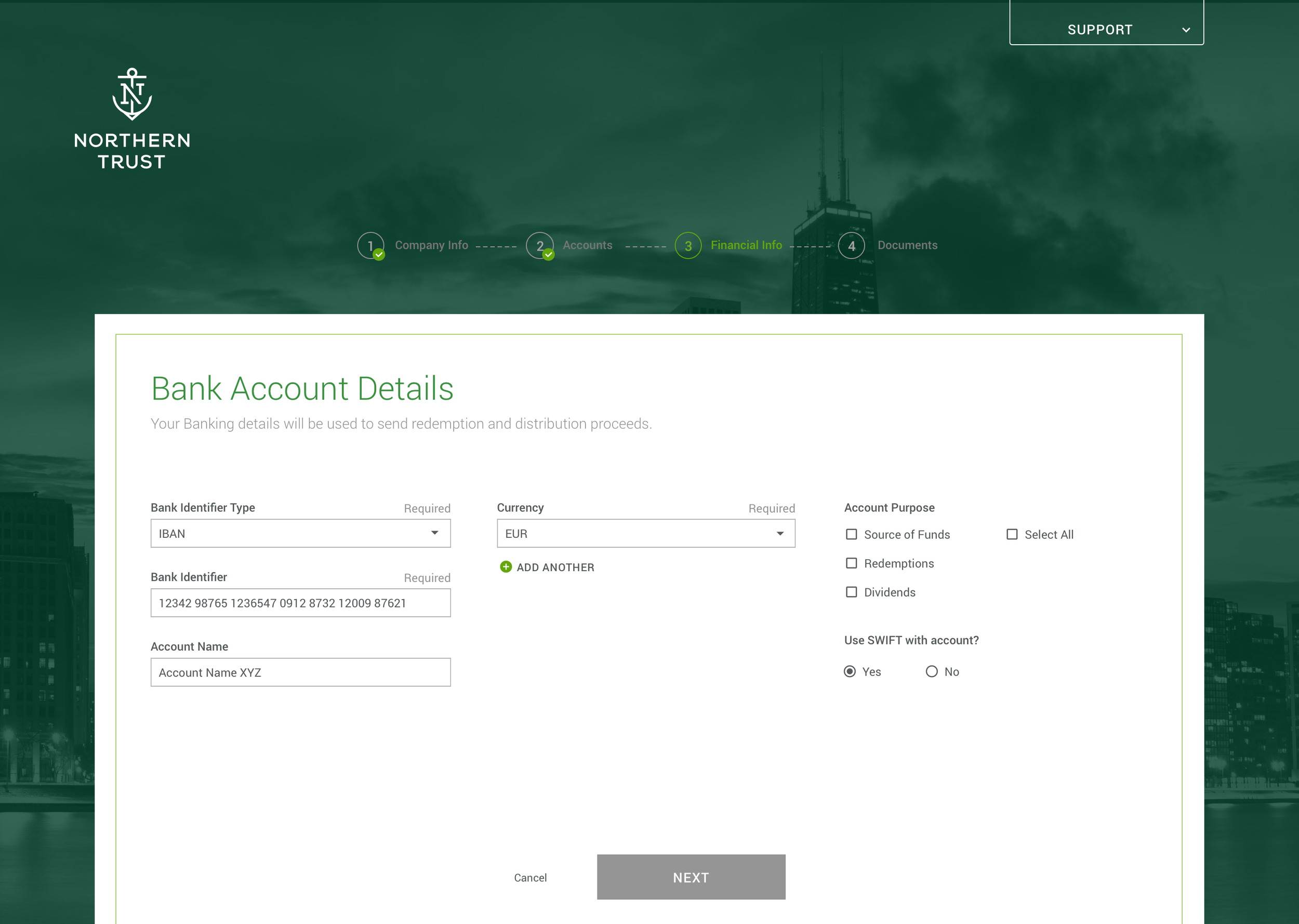

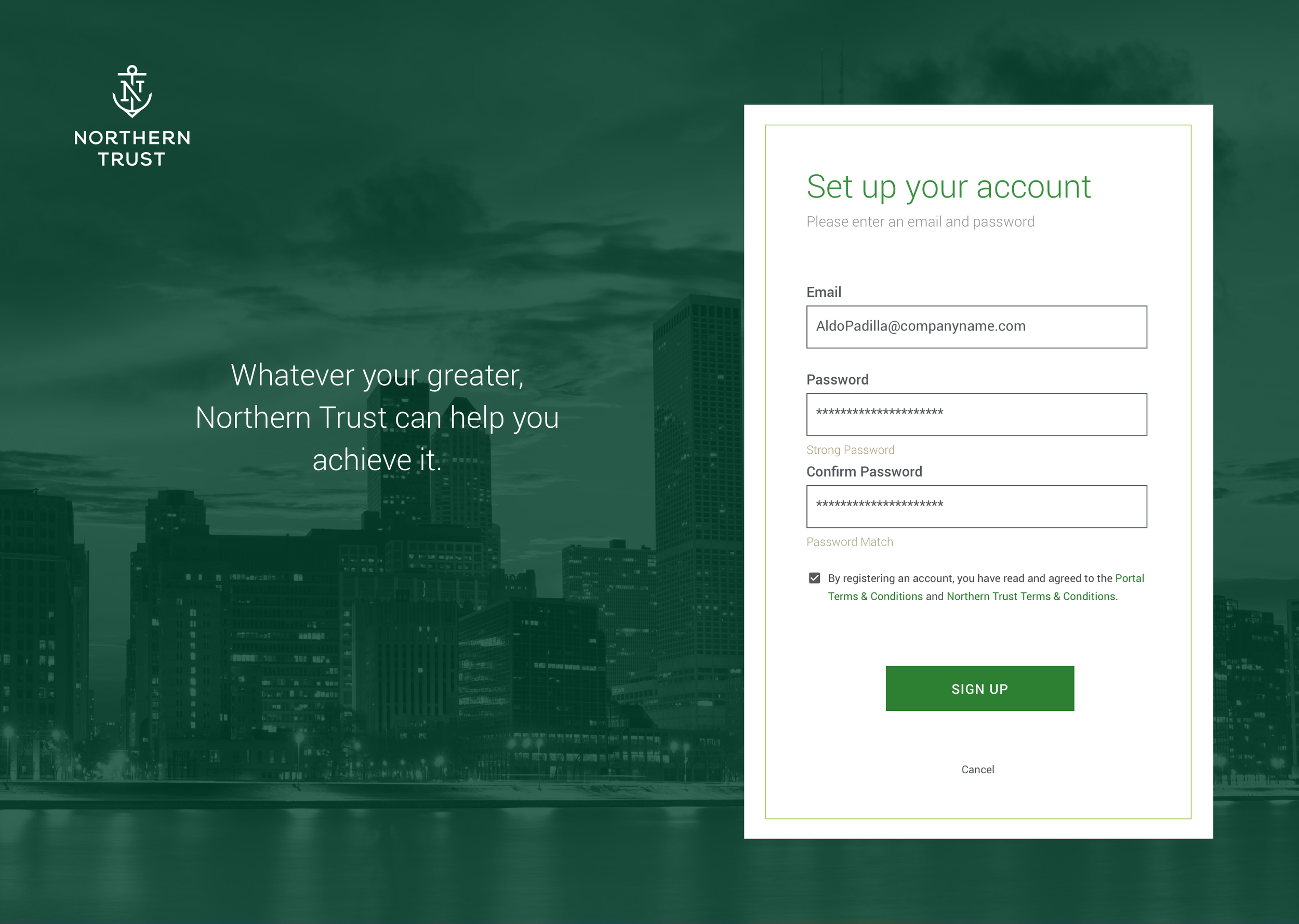
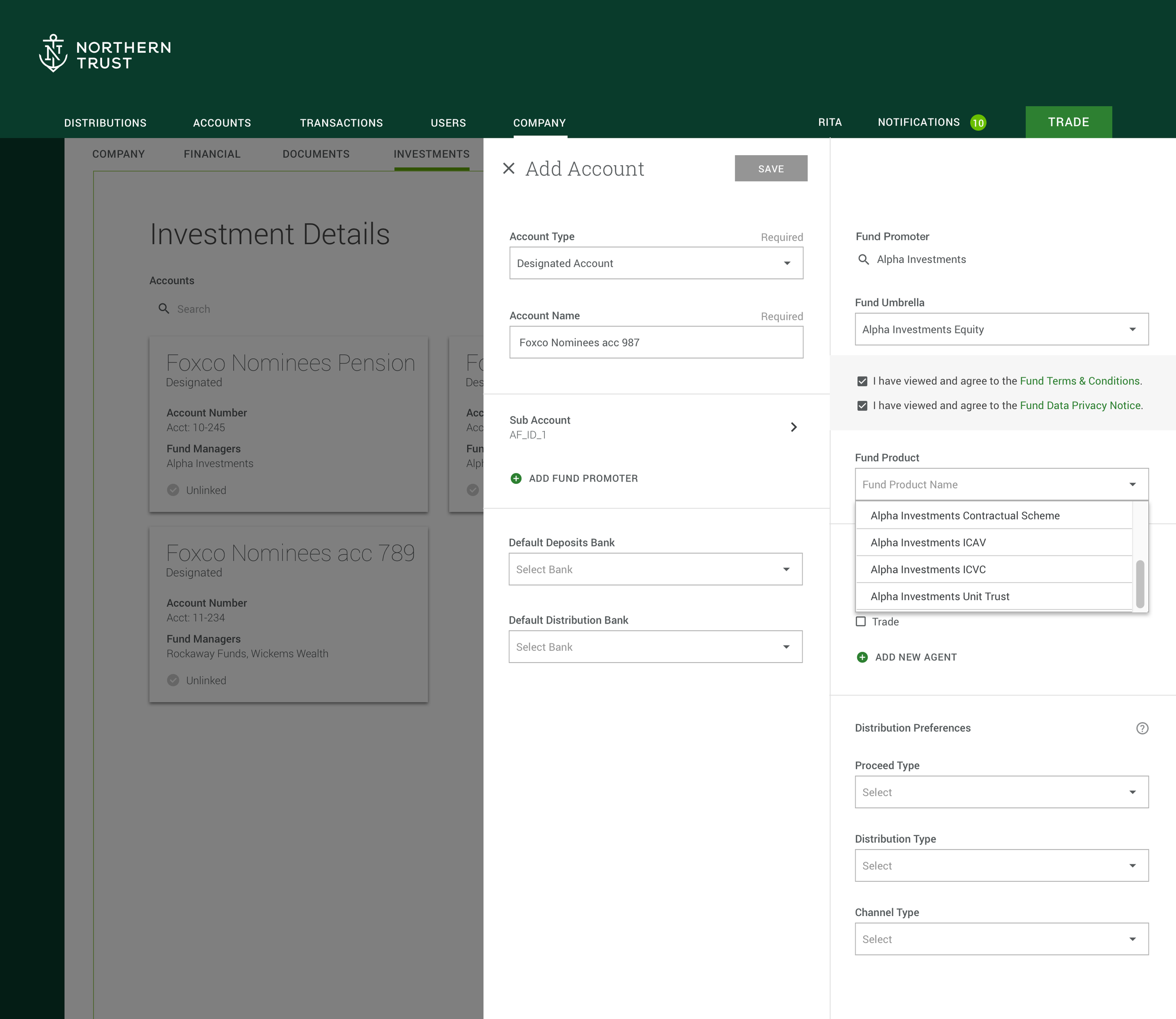
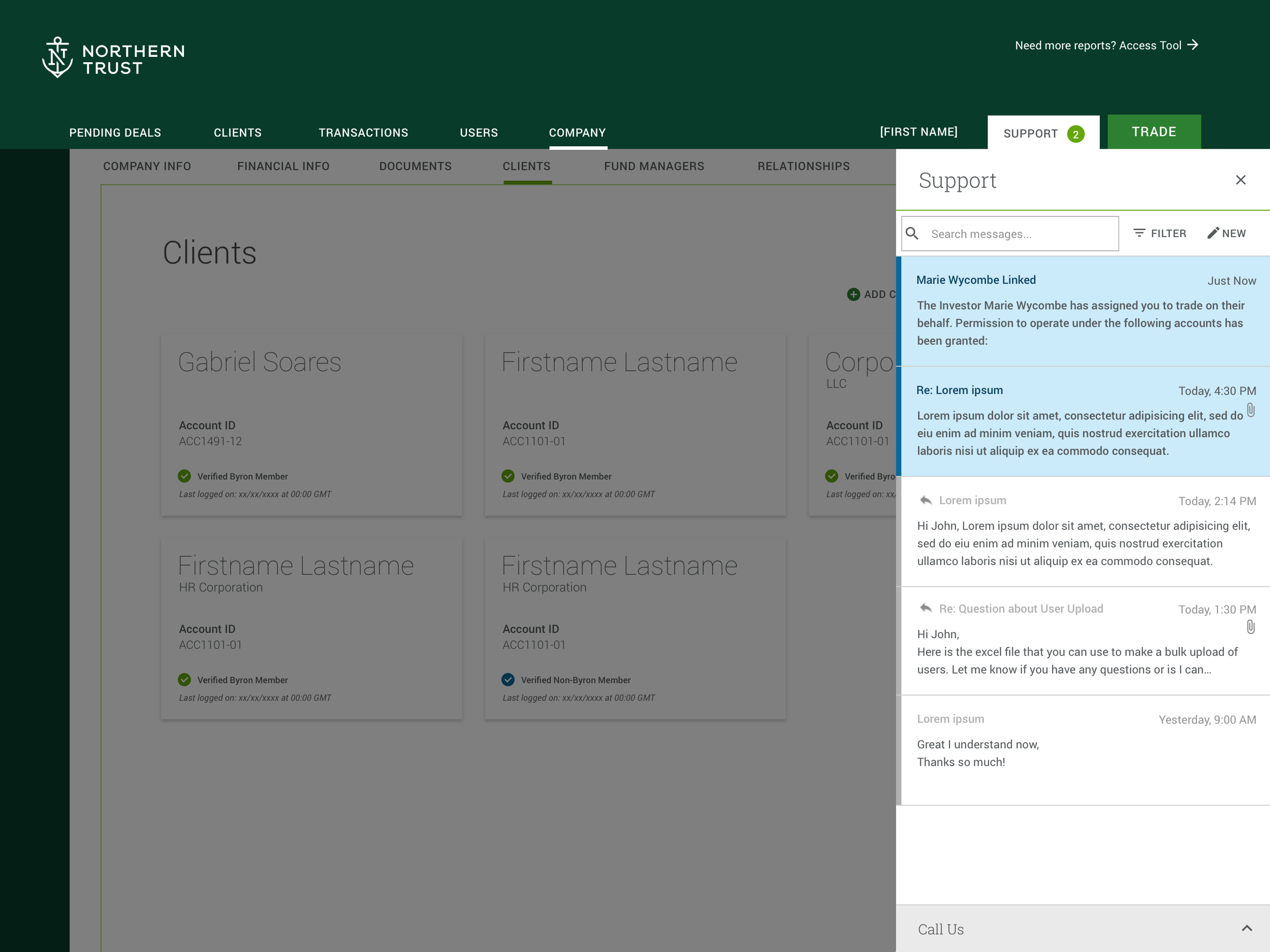
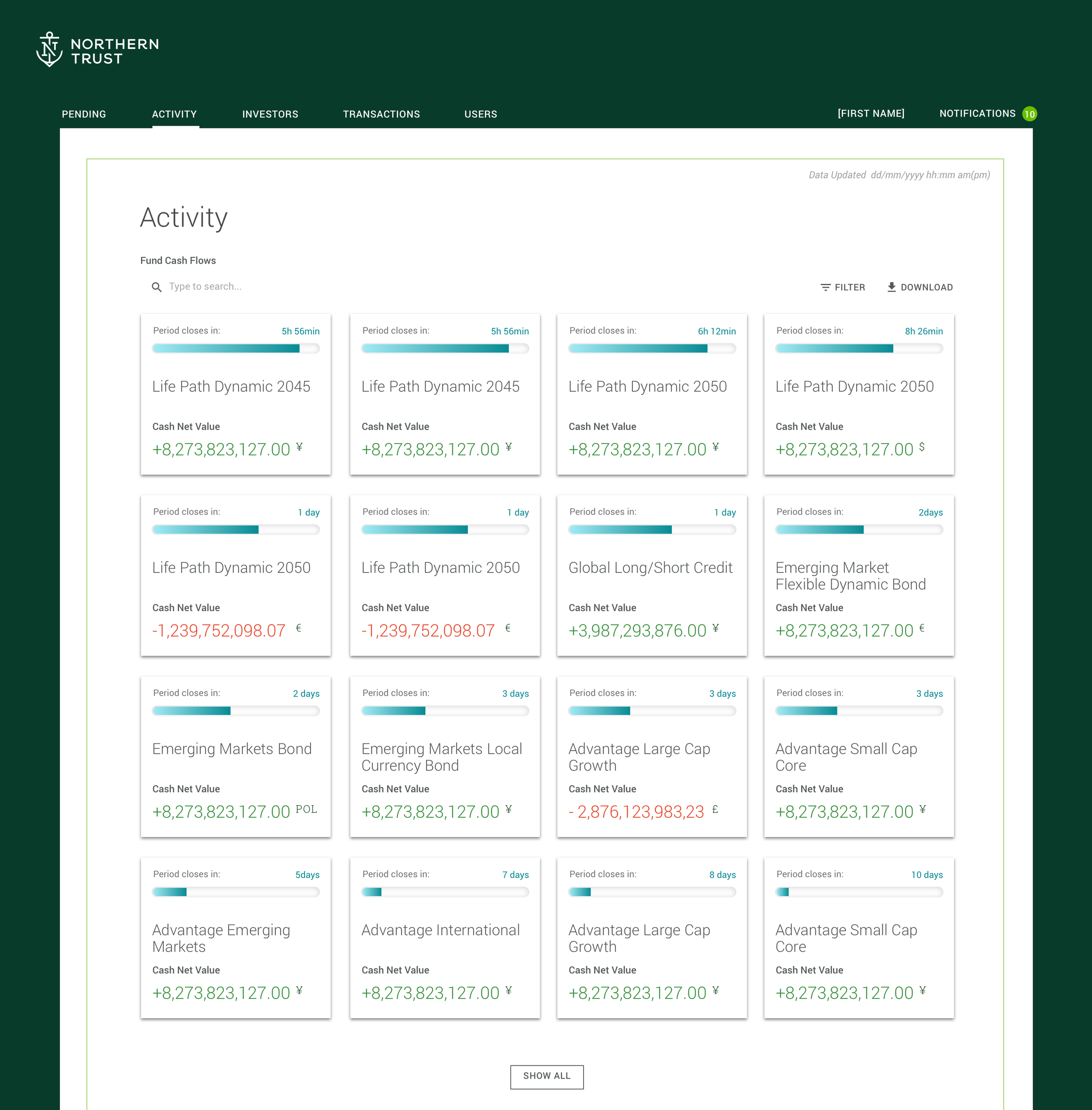

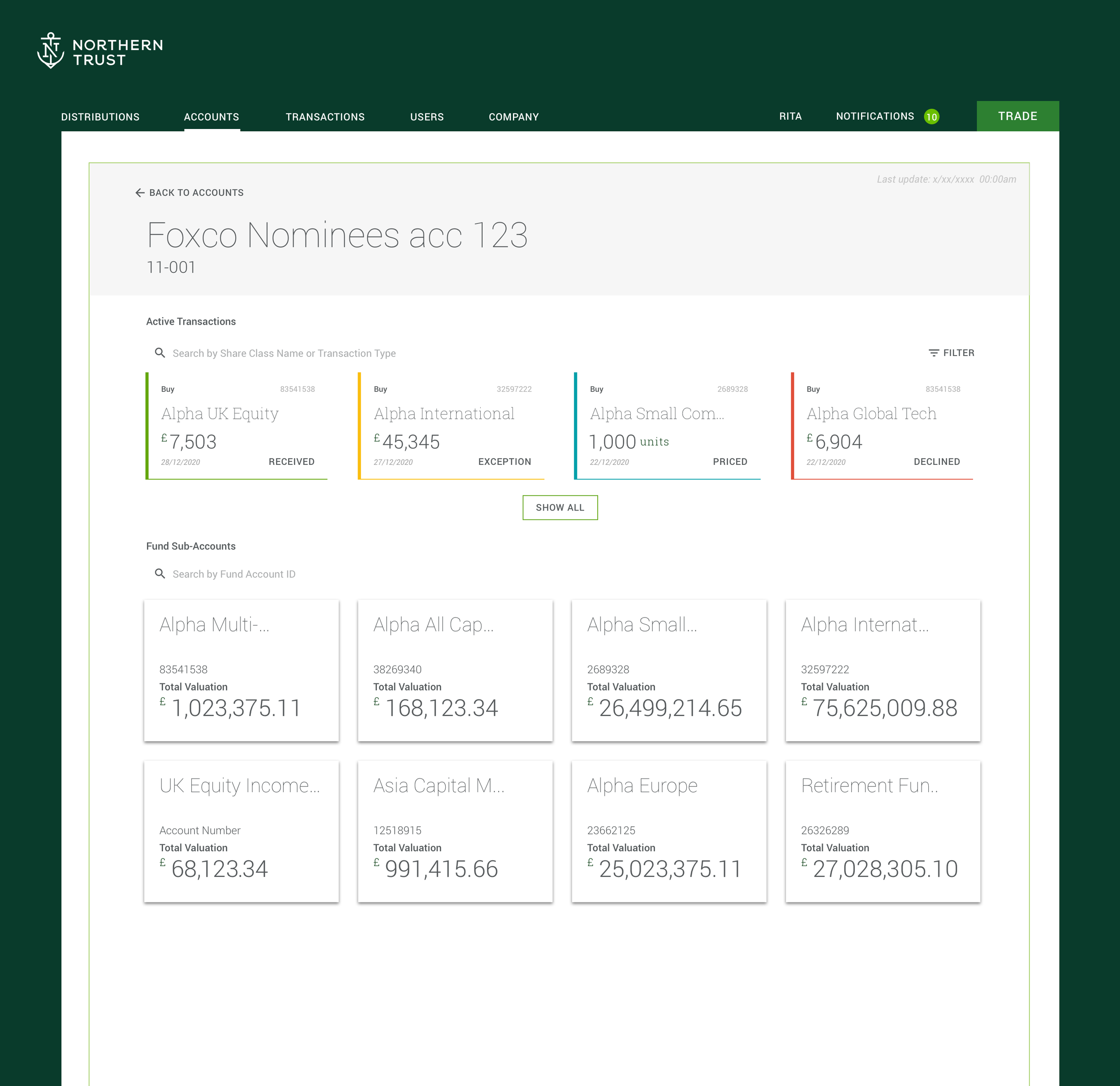
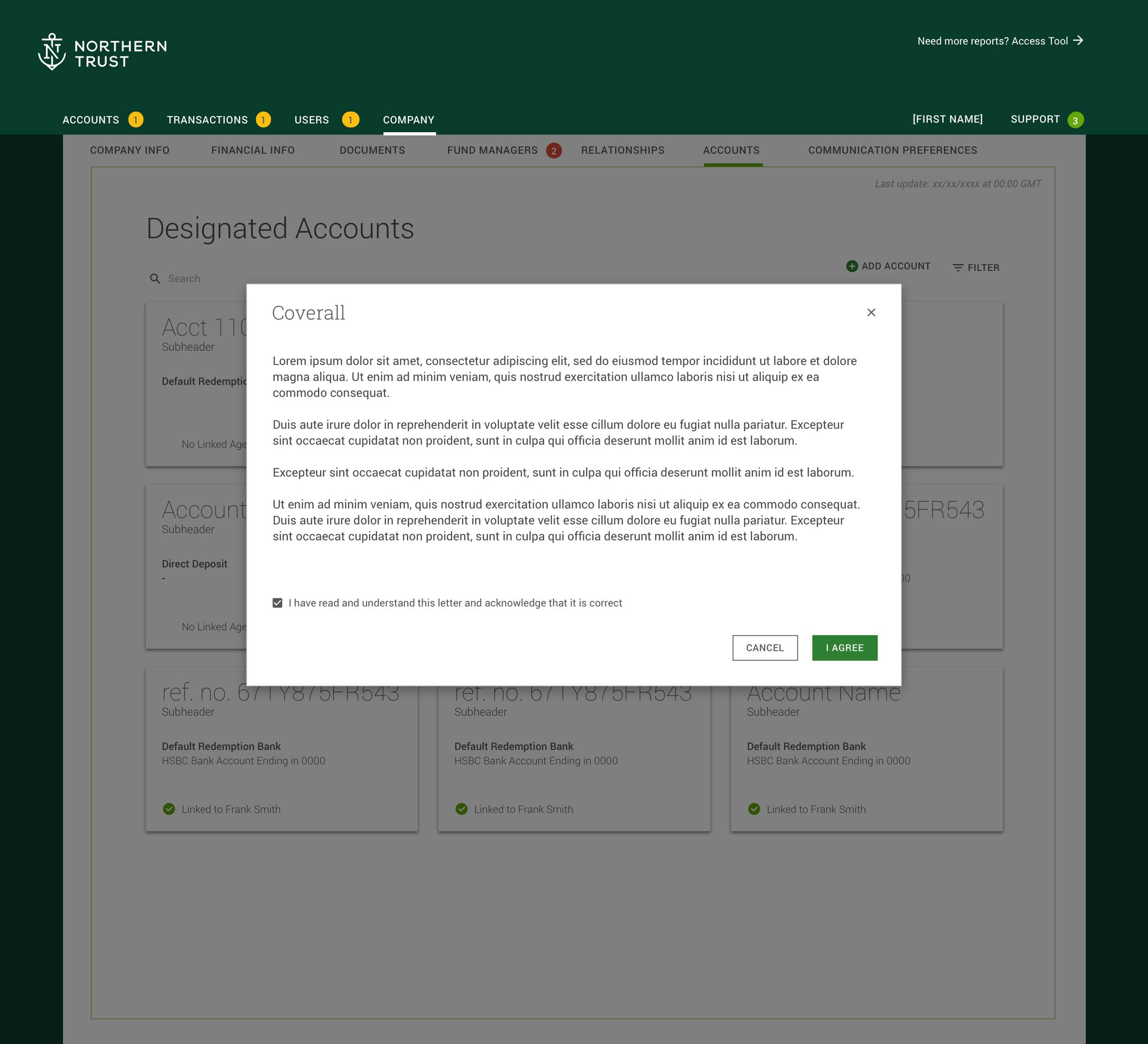



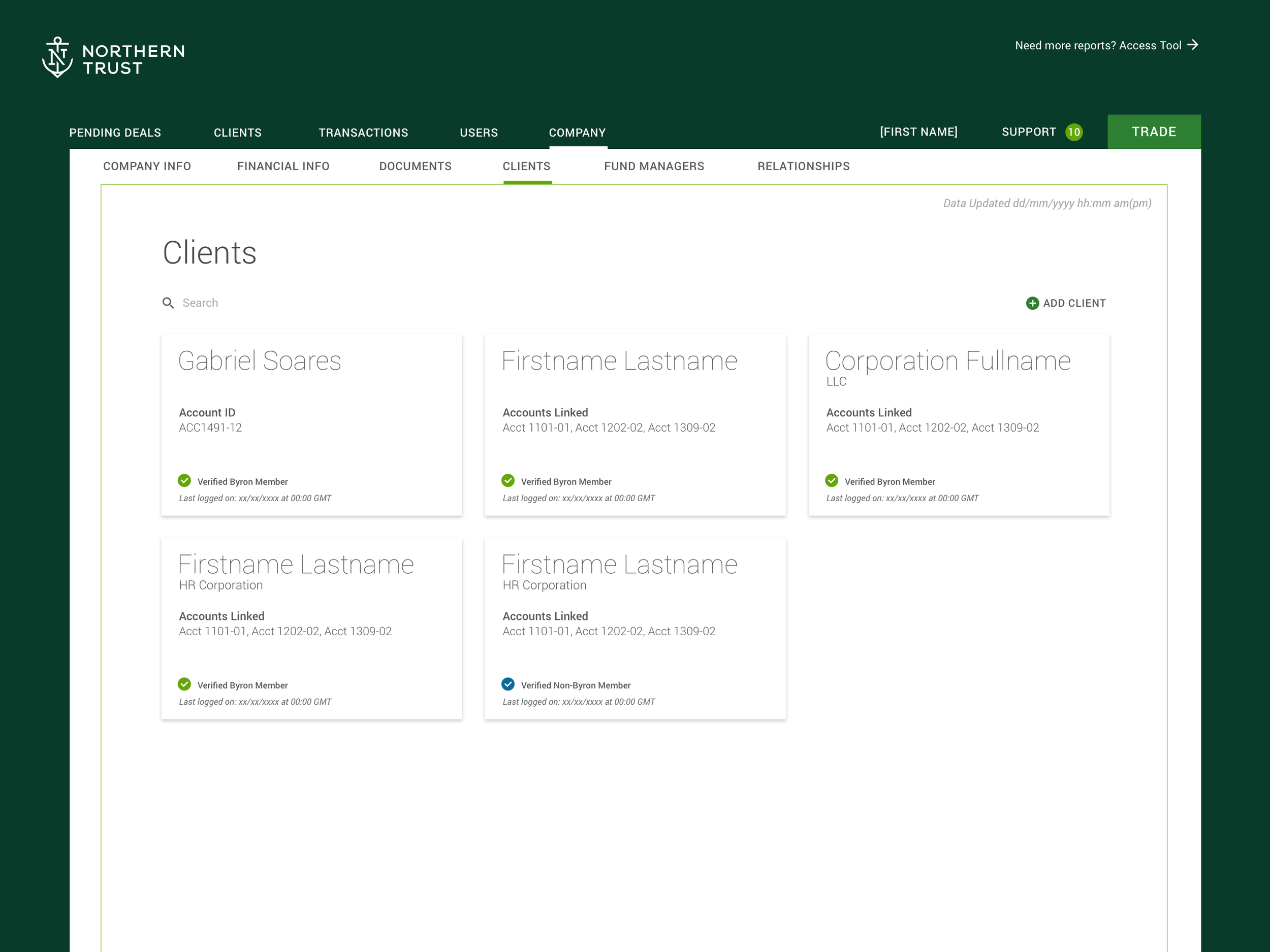
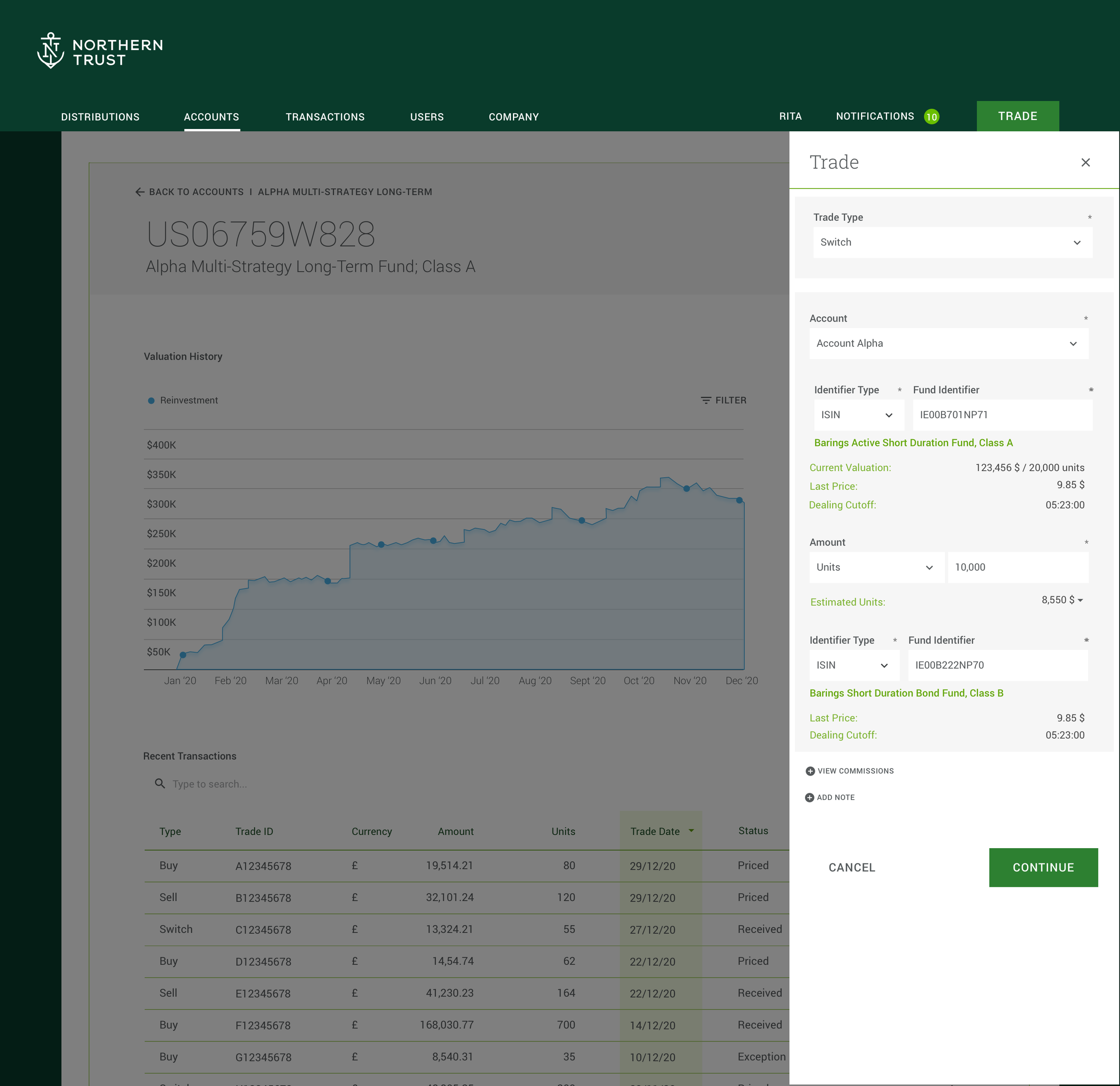


Early Success
We became the only crew within the large 500 people effort that was able to provide a consistent visual representation and finished developed product to the NT leadership.
This visibility and speed allowed our cross-functional team to gain momentum and influence.
Work Expansion
The influence allowed us to secure user testing sessions and discover areas that needed further improvement.
Specifically Payments and Onboarding were still lengthy process taking several screens and manual input. The only way to solve that would require integration with additional technologies:
Document Scanning
Biometric Verification
Payment Platform
Developed an Internal Facing Exceptions Dashboard for Trades
This influence allowed me to gain funding and expand the team by:
+3 designers
I was able to secure partial funding for my team members to attend the General Assembly UX Program.
Because of our efficiency and success, the team was put in charge of additional projects:
White Labels for NT’s Clients
New Design System for the Investment Platforms
API Store for Developers
Outcomes
24/7
Access to Trade Info & Transactions
10 min
Time to onboard & buy
(cut down from 1 month)
Organizational Outcomes
Org shifted to include more structure in sprint planning, more frequent user and client reviews and more empowered Design Teams across all other Platforms.
Team Outcomes
2
Entry Level professionals trained up to become Junior Designers
Client Outcomes
80%
Less daily work
(cut down all manual)
5
Designers added to the team
1 day
KYC process
(from 2 weeks)
Program Wide shift in how Data Science Teams were working, a new team created to perform data mapping connecting back end structures to front end user needs.
95%
Less Fax, Phone & Email Investments
IBM Outcomes
+ $17 Mil
in New Contracts and Work Extensions
2x
70%
Lower error rates
Main Client collaborator (NT head of Global TA Products), was appointed the head of UX, to apply the methodologies that lead our team to success across other Enterprise Efforts.
Northern Trust Doubled their Client Acquisition since the Investment Platforms were built.
Human Outcomes
Reflection
This project was my first leadership position and lasted about 2.5 years. In that time, I had the opportunity to advocate for the expansion of my team, mentor and promote further education for my team members, handle delicate personal issues and build a lasting rapport with colleagues.
I am especially proud that I was able to manage that team and achieve great results for our Clients, Users and IBM while holding space for health concerns, work-life balance, elevating achievements of my team and cultivating mutual support of team members.
All functions to be open and willing to collaborate for Design to Thrive, and that to achieve that Design needs to carry the same openness and willingness to collaborate.




















